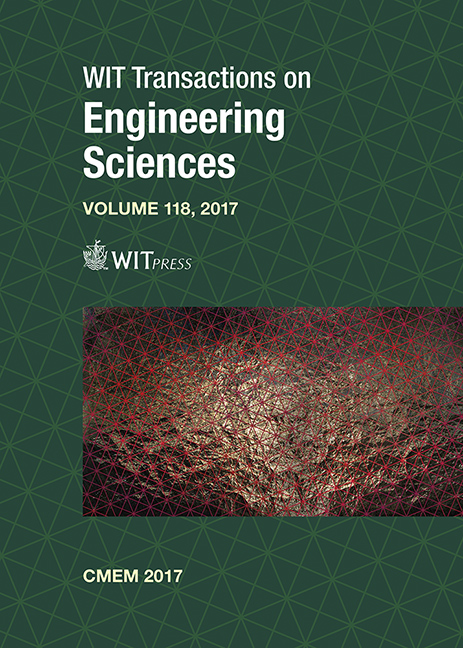EXPERIMENTAL AND FINITE ELEMENT ANALYSIS ON THE RESPONSE AND FAILURE OF LOCAL SHARP-DENTED 6061-T6 ALUMINUM ALLOY TUBES SUBJECTED TO CYCLIC BENDING
Price
Free (open access)
Transaction
Volume
118
Pages
12
Page Range
137 - 148
Published
2017
Size
533 kb
Paper DOI
10.2495/CMEM170141
Copyright
WIT Press
Author(s)
KUO-LONG LEE, YI-FU CHIU, WEN-FUNG PAN
Abstract
In this paper, the response and failure of local sharp-dented 6061-T6 aluminum alloy tubes with different dent depths of 0.3, 0.6, 0.9 and 1.2 mm subjected to cyclic bending was experimentally investigated. The tube-bending machine and curvature-ovalization measurement apparatus were used for conducting the curvature-controlled cyclic bending experiments. It was observed that the moment-curvature relationship showed an almost steady loop from the beginning of the first cycle. However, the ovalization–curvature relationship exhibited an increasing and ratcheting way with the number of the bending cycles. In addition, a deeper dent depth of a tube led to a more severe asymmetrical trend of the ovalization–curvature relationship. It has been demonstrated that the dent depth has small influence on the moment–curvature relationship. But, it has a strong influence on the ovalization–curvature relationship. Next, using proper stress-strain relationship, model, mesh, boundary conditions and loading conditions, the finite element ANSYS was used to describe the moment-curvature and ovalization–curvature relationships. Because the failure type was the fatigue fracture, the ANSYS was used to calculate the maximum and minimum stresses for each cyclic bending case. Finally, a simple fatigue model was proposed for predicting the stress amplitude-number of bending cycles required to produce failure relationship. It was found that the experimental and analytical data agreed quite well.
Keywords
6061-T6 aluminum alloy tubes, local sharp dent, cyclic bending, moment, curvature, ovalization, finite element ANSYS analysis





